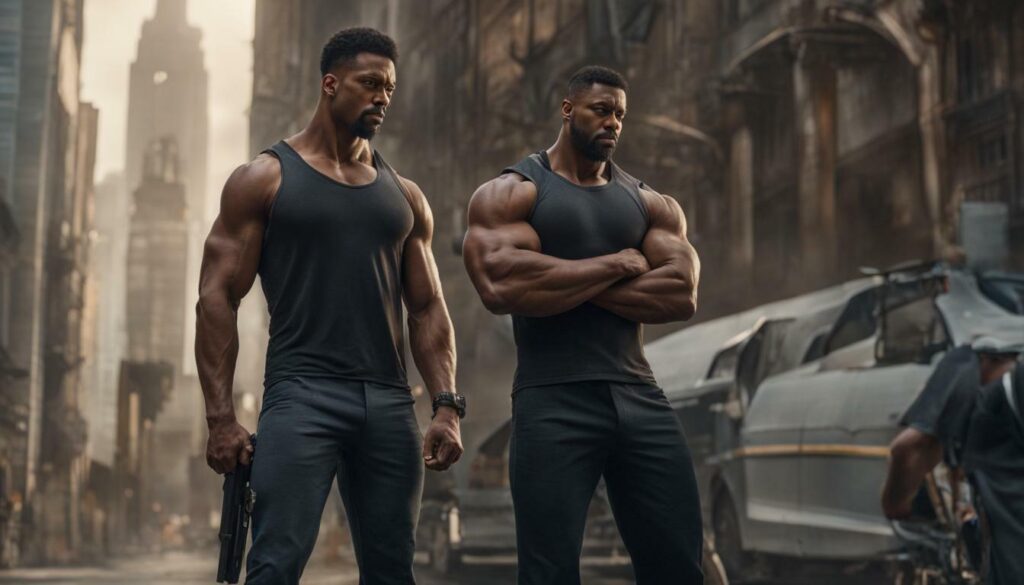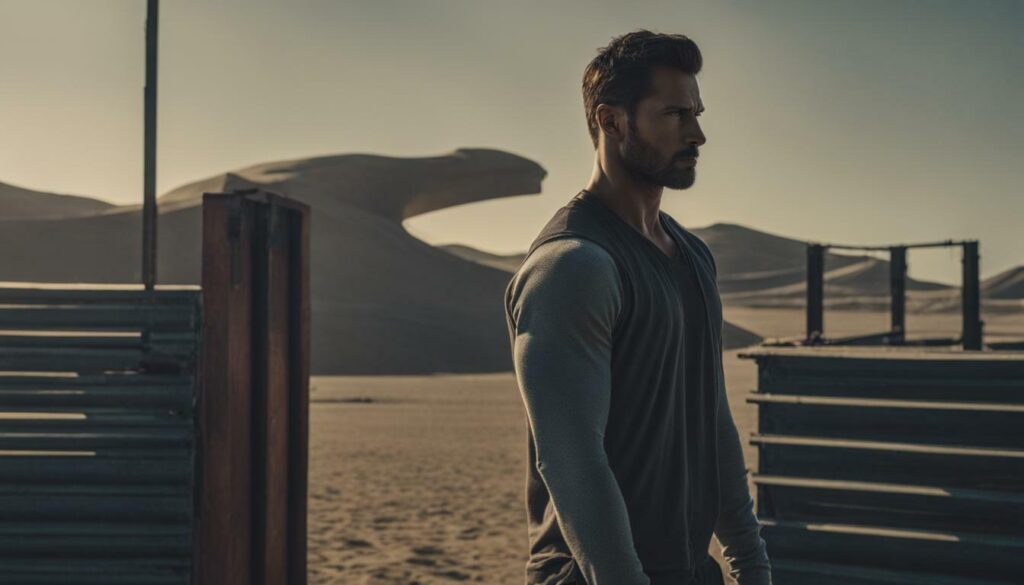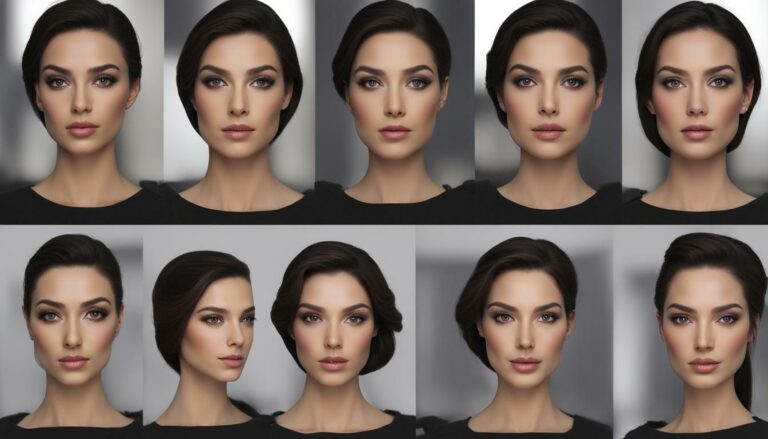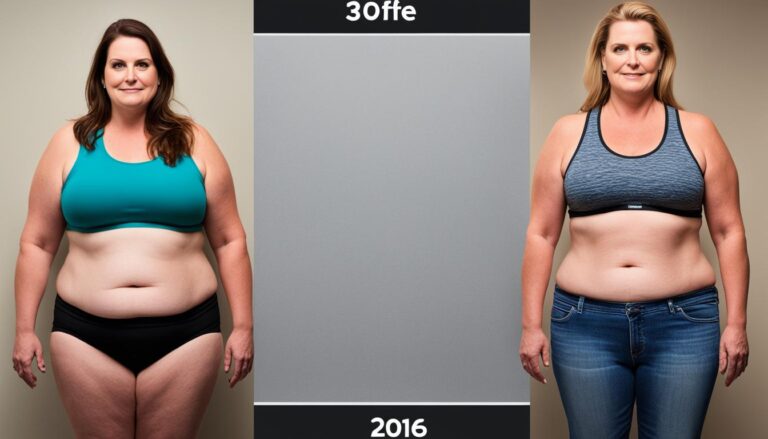Do muscles look smaller on tall people?
Many wonder if muscles look smaller on tall individuals due to their larger frame and longer limbs. The appearance of muscle size can vary depending on several factors, including muscle distribution and the amount of space it covers. While shorter individuals may have the initial advantage of looking more muscular due to filling out their frame easily, taller individuals have the benefit of having more space to put on muscle mass in the long run.
- Muscles may appear smaller on tall people due to their larger frame and longer limbs.
- The rate at which people can build muscle is not influenced by height, but the way muscle mass is distributed and the amount of space it covers varies.
- Taller individuals have the advantage of having more space to put on muscle mass in the long run.
- Factors such as muscle-belly to tendon ratio, bone length and leverage, and tendon insertion play a role in the strength and appearance of muscles.
- Tall individuals should focus on improving ankle mobility, using their long limbs as an advantage, strengthening the back, and not comparing themselves to others based on numbers.
The relationship between height and muscle size
Height does not dictate the rate at which one can build muscle, but it does influence how muscles appear due to various factors. When it comes to muscularity on taller individuals, it is important to consider that muscles may appear smaller on tall people compared to their shorter counterparts. This is primarily due to the larger frame and longer limbs, which create the illusion of less muscle mass. However, it is essential to note that the rate at which people can build muscle is not affected by their height.
Shorter individuals may have an advantage in looking more muscular at the beginning of their fitness journey. Their muscles tend to fill out their frame more easily, giving the impression of greater muscularity. On the other hand, taller individuals have an advantage in the long run. They have more space to put on muscle mass, allowing for increased growth potential.
While height plays a role in muscle appearance, other factors also come into play. Muscle-belly to tendon ratio, bone length and leverage, and tendon insertion all contribute to the overall strength and appearance of muscles. These factors may vary between individuals, regardless of their height, resulting in differences in muscularity.

To optimize their workouts and embrace their unique advantages, tall individuals should focus on certain areas. Improving ankle mobility is crucial, as longer limbs can often lead to decreased range of motion. Additionally, leveraging their long limbs during exercises can be beneficial for developing muscle strength. Strengthening the back is also important, as it contributes to overall posture and creates a more balanced physique.
Finally, it is essential for tall individuals not to compare themselves to others based solely on numbers. Height and body proportions vary greatly among individuals, and focusing on personal progress and goals is key to maintaining a positive mindset on their fitness journey.
In Summary
- Height does not determine the rate at which muscles can be built.
- Muscles may appear smaller on tall individuals due to their larger frame and longer limbs.
- Shorter individuals may initially appear more muscular due to filling out their frame more easily, while taller individuals have greater long-term growth potential.
- Factors such as muscle-belly to tendon ratio, bone length and leverage, and tendon insertion impact muscle strength and appearance.
- Tall individuals should focus on improving ankle mobility, leveraging long limbs, strengthening the back, and avoiding comparisons based on numbers.
| Factor | Impact on Muscle Appearance |
|---|---|
| Muscle-belly to tendon ratio | Affects the overall shape and size of muscles |
| Bone length and leverage | Influences the potential for muscle growth and strength |
| Tendon insertion | Determines how muscles are attached to bones, impacting muscle function and appearance |
Factors influencing muscle appearance in tall individuals
Muscle appearance in tall individuals is influenced by factors such as body proportions, muscle development, and perception of muscle size. The unique physical attributes of height can impact how muscles are perceived and the challenges faced by individuals with a larger frame. Understanding these factors can help tall individuals optimize their fitness routines for better results.
One important factor is body proportions. Tall individuals often have longer limb lengths, which can create a visual perception of smaller muscles. However, it’s essential to consider that muscle size is not solely determined by limb length. Factors such as muscle-belly to tendon ratio, bone length and leverage, and tendon insertion also play a role in muscle development and appearance. Working on improving ankle mobility, for example, can help tall individuals optimize their exercise form and maximize muscle growth.
Another aspect to consider is muscle development. While shorter individuals may have an advantage of looking more muscular initially due to filling out their frame more easily, taller individuals have the advantage of having more space to put on muscle mass in the long run. It’s important for tall individuals to focus on strength training exercises that target the back and other large muscle groups to enhance overall muscular development.
Lastly, perception of muscle size can vary among individuals. Comparing oneself to others based solely on numbers can be misleading and discouraging. Instead, it’s important for tall individuals to focus on their own progress, strength, and overall fitness journey. Embracing their unique advantages and working towards personal goals will lead to a more fulfilling and satisfying fitness experience.
| Factors influencing muscle appearance in tall individuals | Recommendations |
|---|---|
| Body proportions | Focus on improving ankle mobility for better exercise form |
| Muscle development | Emphasize strength training exercises targeting large muscle groups |
| Perception of muscle size | Avoid comparing oneself to others based purely on numbers |
By considering these factors and implementing the recommended strategies, tall individuals can optimize their muscle appearance and fully embrace their unique physique. Remember, true progress is measured not just by muscle size, but also by strength, endurance, and overall well-being.

The size and appearance of muscles in tall individuals are influenced by a combination of factors, including height, body proportions, and muscle development. By understanding these factors and tailoring their approach, tall individuals can achieve their fitness goals and embrace their unique advantages.
While muscles may appear smaller on tall people due to their larger frame and longer limbs, it’s important to note that the rate at which muscle is built is not influenced by height. Instead, it depends on how muscle mass is distributed and the amount of space it covers. This means that shorter individuals may initially have an advantage in looking more muscular as they can fill out their frame more easily. However, taller individuals have the advantage of having more space to put on muscle mass in the long run.
Aside from height, other factors such as muscle-belly to tendon ratio, bone length and leverage, and tendon insertion also play a role in the strength and appearance of muscles. These factors can vary among individuals, regardless of height, and contribute to the overall muscular development of tall people.
For tall individuals looking to optimize their workouts and embrace their unique advantages, there are a few key considerations. Improving ankle mobility is essential due to the longer limbs, which can be achieved through targeted exercises and stretches. Additionally, focusing on strengthening the back can help to maintain proper posture and balance, which is especially important for taller individuals. It’s also crucial for tall individuals not to compare themselves to others solely based on numbers, as body proportions and individual factors will vary.
FAQ
Do muscles look smaller on tall people?
Muscles may appear smaller on tall people due to their larger frame and longer limbs. However, the rate at which people can build muscle is not influenced by height.
What factors influence muscle appearance in tall individuals?
The way muscle mass is distributed and the amount of space it covers varies in tall individuals. Factors such as muscle-belly to tendon ratio, bone length and leverage, and tendon insertion also play a role in the strength and appearance of muscles.
Is there an advantage to being shorter when it comes to looking more muscular?
Shorter individuals may have an advantage in looking more muscular at the beginning of their fitness journey due to filling out their frame more easily. However, taller individuals have the advantage of having more space to put on muscle mass in the long run.
What should tall individuals focus on in their fitness journey?
Tall individuals should focus on improving ankle mobility, using their long limbs as an advantage, strengthening the back, and not comparing themselves to others based on numbers.






